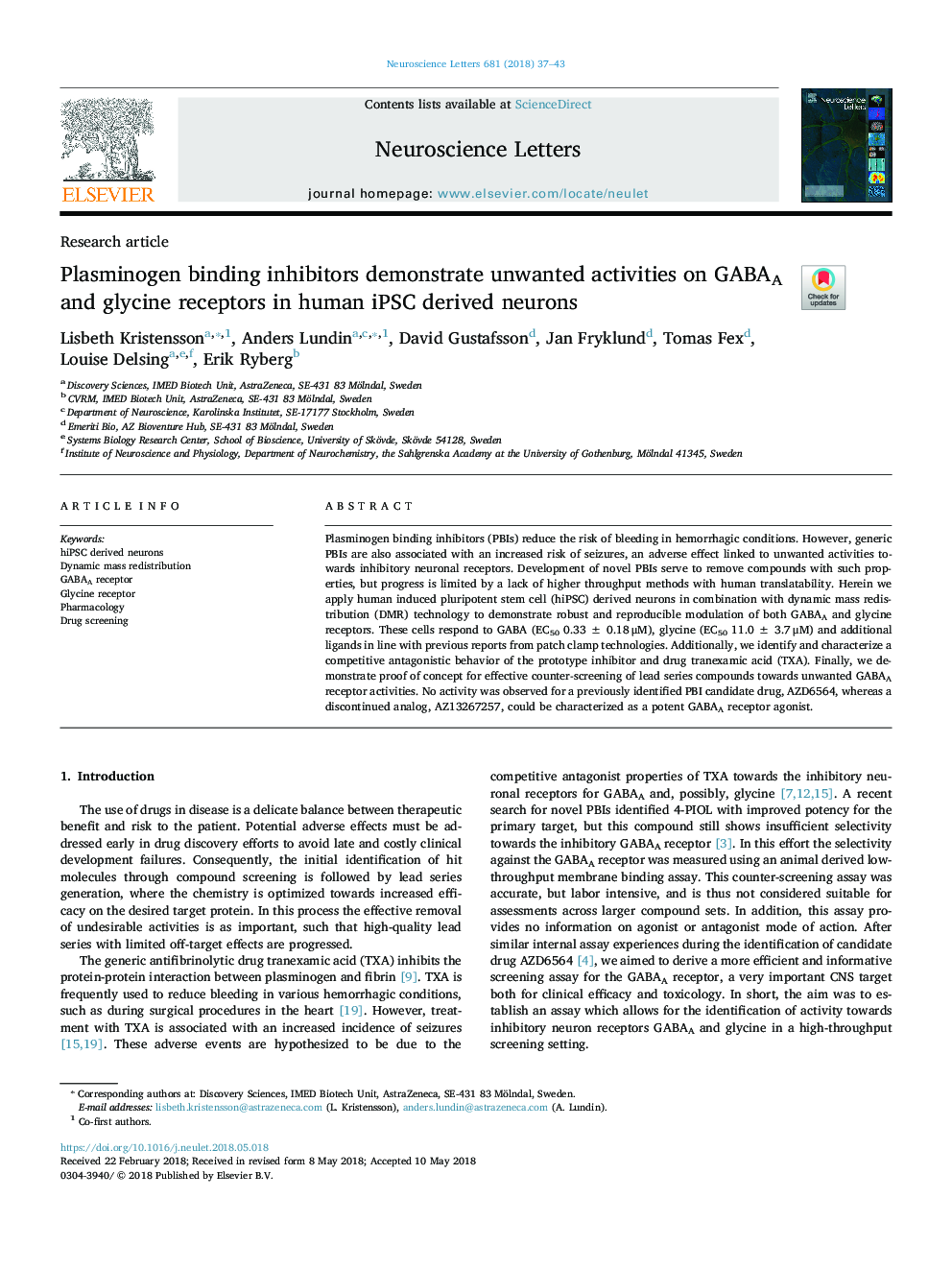| Article ID | Journal | Published Year | Pages | File Type |
|---|---|---|---|---|
| 8841423 | Neuroscience Letters | 2018 | 7 Pages |
Abstract
Plasminogen binding inhibitors (PBIs) reduce the risk of bleeding in hemorrhagic conditions. However, generic PBIs are also associated with an increased risk of seizures, an adverse effect linked to unwanted activities towards inhibitory neuronal receptors. Development of novel PBIs serve to remove compounds with such properties, but progress is limited by a lack of higher throughput methods with human translatability. Herein we apply human induced pluripotent stem cell (hiPSC) derived neurons in combination with dynamic mass redistribution (DMR) technology to demonstrate robust and reproducible modulation of both GABAA and glycine receptors. These cells respond to GABA (EC50 0.33â¯Â±â¯0.18â¯Î¼M), glycine (EC50 11.0â¯Â±â¯3.7â¯Î¼M) and additional ligands in line with previous reports from patch clamp technologies. Additionally, we identify and characterize a competitive antagonistic behavior of the prototype inhibitor and drug tranexamic acid (TXA). Finally, we demonstrate proof of concept for effective counter-screening of lead series compounds towards unwanted GABAA receptor activities. No activity was observed for a previously identified PBI candidate drug, AZD6564, whereas a discontinued analog, AZ13267257, could be characterized as a potent GABAA receptor agonist.
Related Topics
Life Sciences
Neuroscience
Neuroscience (General)
Authors
Lisbeth Kristensson, Anders Lundin, David Gustafsson, Jan Fryklund, Tomas Fex, Louise Delsing, Erik Ryberg,
